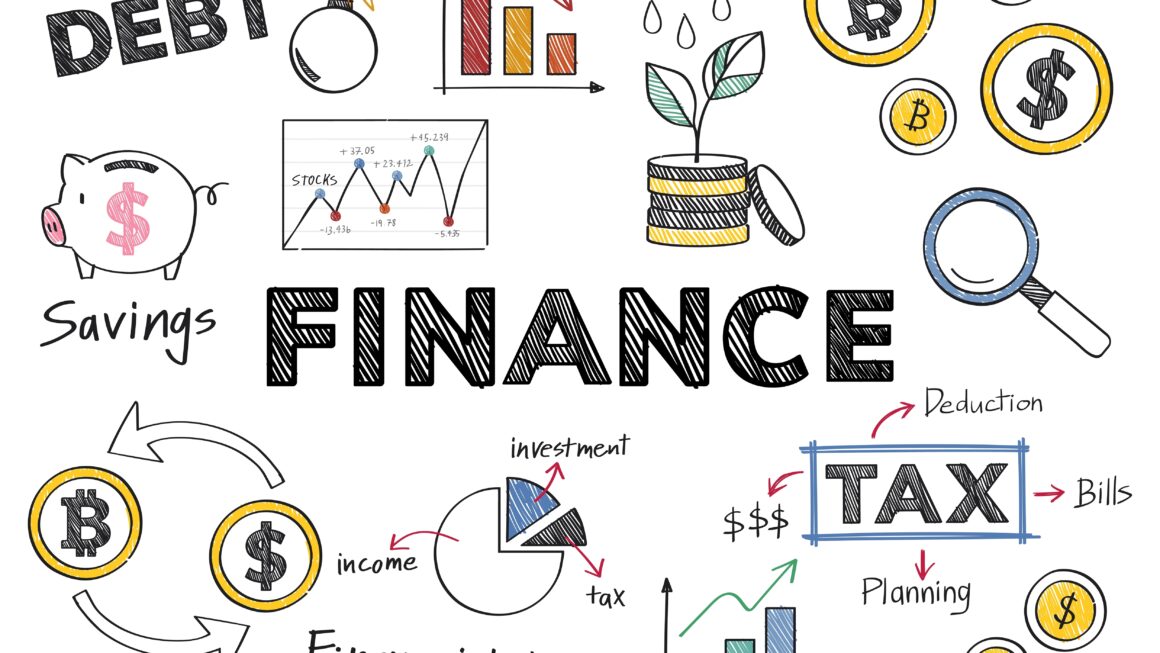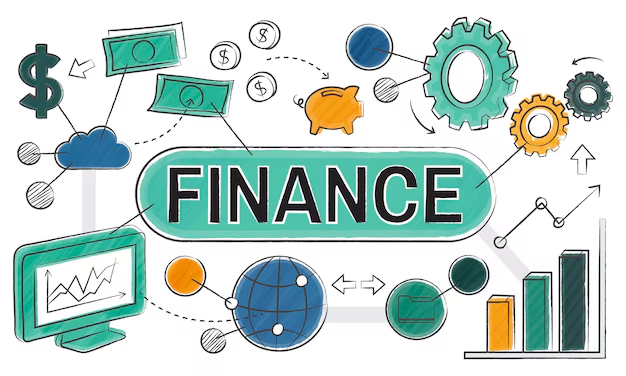The financial sector has undergone a significant transformation in recent years, driven by the rapid rise of Financial Technology (Fintech). From mobile payment apps to online lending platforms, blockchain technology, and robo-advisors, fintech has revolutionized the way individuals and businesses manage their finances. It has broken down traditional barriers in the financial industry, providing consumers and businesses with more accessible, efficient, and innovative financial solutions.
In this article, we’ll explore the key developments in the fintech sector, its impact on various aspects of the financial industry, and the challenges and opportunities it presents for businesses, consumers, and regulators.
1. What is Financial Technology (Fintech)?
Financial Technology, or fintech, refers to the use of technology to improve and automate the delivery and use of financial services. Fintech covers a wide range of applications, from digital payment systems to online banking, investment management, and even blockchain-based services. The goal of fintech is to streamline financial operations, enhance user experience, increase accessibility, and reduce costs.
Some key areas of fintech include:
- Digital Payments and Mobile Wallets
- Peer-to-Peer (P2P) Lending
- Crowdfunding Platforms
- Blockchain and Cryptocurrencies
- Robo-Advisors
- Insurtech (Insurance Technology)
- Regtech (Regulatory Technology)
The growing adoption of fintech solutions has led to the democratization of financial services, giving consumers more control over their finances and enabling businesses to reduce operational costs and improve their offerings.
2. Key Trends in Fintech
A. Digital Payments and Mobile Wallets
One of the most noticeable impacts of fintech has been in the digital payment space. Mobile wallets and payment platforms like PayPal, Venmo, Apple Pay, Google Pay, and Alipay have made it easier for consumers to make payments, transfer funds, and manage their money from their smartphones.
Benefits:
- Convenience: Users can make instant payments anytime, anywhere, without the need to carry cash or visit a physical bank.
- Security: Mobile wallets offer enhanced security features like encryption, biometric authentication (fingerprint or face recognition), and two-factor authentication to protect transactions.
- Lower Transaction Costs: Digital payments often come with lower fees compared to traditional bank transfers and card payments.
These payment platforms are not just limited to consumer use but are also helping businesses to streamline payment acceptance, making it easier to accept both domestic and international transactions.
B. Blockchain and Cryptocurrencies
Blockchain technology, the underlying system behind cryptocurrencies like Bitcoin and Ethereum, has been a game-changer in the financial services industry. Blockchain offers a decentralized, secure, and transparent ledger for transactions, which reduces the need for intermediaries like banks or payment processors.
Impact of blockchain:
- Decentralization: Blockchain removes the need for a central authority, allowing peer-to-peer transactions without the need for a third party.
- Increased Transparency: Every transaction on the blockchain is recorded and visible to all participants, reducing the risk of fraud.
- Security: Blockchain uses cryptographic techniques to secure transactions, making it difficult for malicious actors to alter data.
- Smart Contracts: These self-executing contracts automatically enforce the terms of an agreement, making processes more efficient and reducing reliance on intermediaries.
Cryptocurrencies also open up new possibilities for cross-border payments, offering cheaper, faster, and more accessible alternatives to traditional currency transfers.
C. Robo-Advisors and Wealth Management
Robo-advisors are automated platforms that provide financial advice or investment management services based on algorithms. They use data about an individual’s financial goals, risk tolerance, and time horizon to create personalized investment portfolios, often at a much lower cost than traditional human advisors.
Why it’s gaining popularity:
- Lower Fees: Robo-advisors charge significantly lower fees than traditional wealth managers, making investment management more accessible to a broader audience.
- Ease of Use: Many robo-advisors are user-friendly and provide simple interfaces, making them ideal for individuals who are new to investing.
- Accessibility: They allow investors to start with smaller amounts of money and invest in diversified portfolios, making wealth management accessible to people of all income levels.
Robo-advisors are particularly attractive to millennials and younger generations, who may not have enough assets to justify hiring a personal financial advisor.
D. Peer-to-Peer (P2P) Lending and Crowdfunding
Peer-to-peer (P2P) lending platforms have created an alternative to traditional bank loans. Through these platforms, individuals or businesses can borrow money directly from investors without going through banks. Examples of popular P2P lending platforms include LendingClub, Prosper, and Funding Circle.
Similarly, crowdfunding platforms like Kickstarter, GoFundMe, and Indiegogo allow individuals and businesses to raise capital from a large number of people. These platforms make it possible for entrepreneurs, especially startups, to access funding without relying on venture capital or traditional financial institutions.
Advantages of P2P lending and crowdfunding:
- Access to Credit: P2P lending offers an alternative source of funding for borrowers who may not qualify for traditional loans.
- Better Terms for Lenders: Investors may benefit from higher interest rates compared to those offered by traditional banks.
- Financial Inclusion: Both P2P lending and crowdfunding platforms provide financial opportunities to underserved markets, enabling greater financial inclusion.
3. Fintech in Specific Sectors
A. Insurtech: Innovation in the Insurance Industry
Insurtech is transforming the insurance sector by using technology to streamline processes, enhance customer experiences, and improve risk assessment. Startups are using data analytics, AI, and machine learning to develop more accurate risk models and offer more personalized insurance products.
Key benefits of insurtech:
- On-demand Insurance: Some insurtech companies allow users to purchase short-term insurance for specific needs, such as travel or renting a car, offering more flexibility.
- Faster Claims Processing: Automation and AI are helping insurance companies process claims faster and more accurately, reducing administrative costs.
- Personalized Policies: Insurtech enables companies to tailor insurance policies based on individual customer behavior, resulting in more relevant and affordable coverage.
B. Regtech: Compliance and Regulatory Technology
Regtech refers to the use of technology to help financial institutions comply with regulatory requirements efficiently and cost-effectively. It uses AI, big data analytics, and blockchain to help businesses monitor and manage compliance risks, reduce fraud, and streamline reporting processes.
Benefits of regtech:
- Improved Compliance: Regtech solutions help financial institutions stay compliant with ever-evolving regulations by automating compliance tasks, monitoring transactions for suspicious activity, and generating accurate reports.
- Risk Reduction: Automated tools can quickly identify potential risks, such as money laundering or fraudulent transactions, minimizing the risk of penalties.
- Cost Savings: By automating compliance processes, companies can reduce costs associated with regulatory reporting and audits.
4. The Future of Fintech: Opportunities and Challenges
Opportunities:
- Financial Inclusion: Fintech has the potential to bring financial services to underserved populations, including those without access to traditional banking. Mobile banking, microloans, and mobile payment systems are already making financial services more accessible to people in remote and developing regions.
- Smart Cities and Digital Economy: As the world becomes more connected, fintech can play a significant role in shaping the digital economy. By integrating fintech solutions into smart cities, it can streamline everything from public transportation payments to energy management and healthcare.
- Improved Customer Experience: The use of AI, machine learning, and data analytics will continue to enhance personalization in financial services, providing consumers with tailored experiences that meet their unique needs.
Challenges:
- Regulatory Uncertainty: The rapid pace of innovation in fintech has led to a regulatory gap, as governments and regulators struggle to keep up with new technologies. Financial services need clear and effective regulations to ensure consumer protection and market stability.
- Cybersecurity Risks: As fintech services become more widespread, the risk of cyberattacks grows. Companies must invest in robust cybersecurity measures to protect sensitive financial data.
- Trust and Adoption: Despite the growing popularity of fintech, many consumers remain cautious about using digital financial services due to concerns about privacy, security, and the reliability of these technologies. Building trust will be key to continued growth.
5. Conclusion
Fintech has dramatically reshaped the financial services landscape, offering innovative solutions that benefit consumers, businesses, and financial institutions. From mobile payments to blockchain technology, robo-advisors, and P2P lending, fintech has introduced greater convenience, accessibility, and efficiency in financial services.
However, the rise of fintech also brings challenges related to regulation, security, and consumer trust. As fintech continues to evolve, companies, regulators, and consumers must collaborate to ensure that innovation is balanced with appropriate safeguards to protect the financial system and its participants.
The future of fintech is bright, with significant opportunities to further improve financial inclusion, streamline processes, and create more personalized financial experiences. As technology advances, fintech will undoubtedly continue to drive change in the financial industry, reshaping how we manage, invest, and interact with money.
Key Takeaways:
- Fintech encompasses a wide range of innovations, from digital payments and mobile wallets to blockchain, robo-advisors, and insurtech.
- Blockchain and cryptocurrencies are revolutionizing payments and creating opportunities for decentralization and transparency in financial transactions.
- Robo-advisors and P2P lending are democratizing access to wealth management and credit, respectively, making them more affordable and accessible.
- Regtech helps businesses stay compliant with regulations, reducing costs and improving risk management.
- While fintech presents immense opportunities, it also raises concerns related to cybersecurity, regulation, and consumer trust, which must be addressed for sustainable growth.




